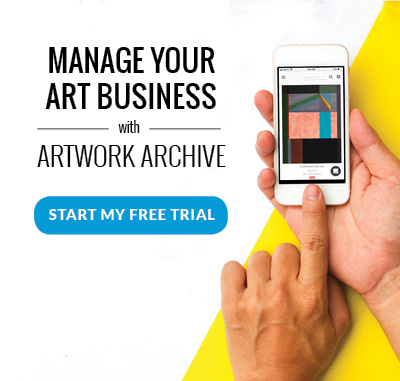
Photo by Alan Reeves, Creative Commons Attribution 2.0
You’ve heard it before, but it bears repeating: social media is here to stay! It is changing the way the art world works and how people are buying art.
Perhaps you’re aware of the opportunity, and you’re giving it your best effort. You log into Facebook and share your latest work. You tweet every other day. But, it hasn’t been giving you the results you expected. You get discouraged. You do even less with social media. Does this sound familiar?
Here are some common reasons that artists struggle with social media and how to overcome them:
1. “I Don’t Know What to Write”
You probably think authors and poets have it easy when it comes to social media. They always know what to say, right? That may be true, but visual artists actually have the advantage. In recent years, led by the popularity of Pinterest, social media has been trending away from words towards images. According to new Twitter data, tweets with images are 35% more likely to be shared than text-only tweets. And Pinterest and Instagram were designed to be visual platforms.
So, don’t worry about what you say. Instead, give fans and consumers a glimpse into your world. Share a work in progress or a picture of you in your studio. Snap a shot of your new supplies, or simply share an image that inspires you. It may seem trite, but your fans will enjoy getting a peek into your creative process.
2. “I Don’t Have Time”
We understand that you’d rather be creating than worrying about posting on social media at certain times of day. Luckily, there are a number of free and easy-to-use tools out there that make this task much simpler. Buffer and Hootsuite are both popular options, allowing you to auto-schedule posts and shorten links. That way you can take care of an entire week of posts (across all your social media platforms) in one sitting.
If you’re looking for a way to fill your feed with interesting articles and inspiration from other artists, try out Feedly. This platform lets you subscribe to your favorite blogs and magazines (Art Biz Blog, ARTnews, Artist Daily, etc.), read all their most recent posts in one spot, and easily share articles on your Twitter and Facebook feeds right from there.
3. “I Don’t See Returns”
When you first build a social presence, it’s likely going to be small. It’s easy to be discouraged by those small numbers and feel that you’re not making an impact, or that your effort is not seeing rewards. Don’t give up just yet! When it comes to social media, quality is more important than quantity. It’s okay if you only have 50 likes on your Facebook page if those 50 people are actively engaged and sharing your content. In fact, that’s better than having 500 people who ignore your posts! Focus on the followers you do have and give them content they will enjoy. When they share your work, it’s not just those 50 people seeing your talent; it’s their friends, and the friends of their friends.
Over time, if growth just isn’t happening, it isn’t you. Your target audience might not hang out on the social media platform that you’re currently using. Take some time to think about who you are trying to reach, and then dig around to find out where these people hang out online. Design your social media strategy backwards with your audience and goal in mind, and select the right platform based on that goal.
4. “I’ll Just Post and Be Done With It”
Social media is called “social” for a reason. If you just throw up a post and never engage with your users or the post again, it’s like walking into a party and standing alone in the corner. What’s the point? Think of it this way; social media is a way to have a conversation with your customers and fans. If you aren’t participating in conversations or reaching out to other people, you’re not doing it right!
Here are a few strategies: If someone posts a comment on your blog or Facebook, make sure you reply within 24 hours. Even a simple “Thanks!” will go a long way in terms of engagement, because it makes people feel good to know that you’re reading their posts and that there is a real person behind the page. A great way to spark a conversation is to pose a question on Facebook. Ask people to name a new piece of art that you created or ask what they think of a show at a local gallery or museum.
5. “I Don’t Understand It”
Do you ever feel like there’s a new social network to learn every few months when you haven’t gotten a handle on the first one? Social media can be frustrating and ineffective if you don’t know what you should be doing on that platform. Know that you aren’t alone in this! Don’t be afraid to ask for help. Ask a friend or first-born child if they can show you around a Facebook page. Chances are they’ll know enough to make you comfortable and maybe even show you a trick or two. If you’ve exhausted your personal network and still feel unsure of what you’re doing, there’s plenty of great content out there to guide you through it. Here are a few places to start:
Ultimately know that you aren’t going to do anything with one post that will ruin your entire career. This is a low-stakes, high-reward activity that can be career-changing!
You don't have to do it all, either! Develop a strong social strategy by checking out "Which Social Media Channel is Right for Your Art Business?"




.png?1455753432)
.jpg?1683573364)
.JPG?1513037447)
.png?1534959303)
